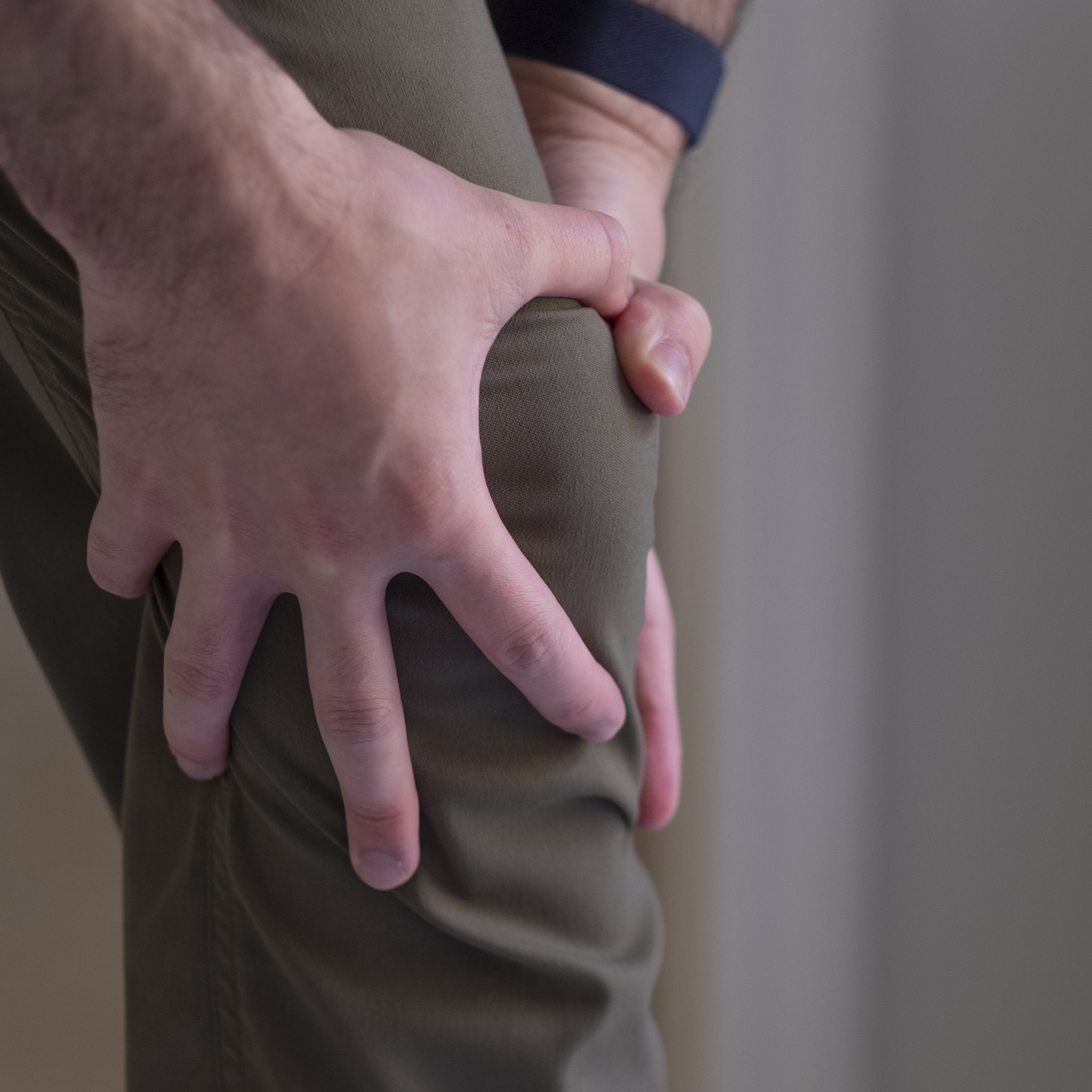New Jersey Woman Becomes First Successful Patient of Knee Replacement Using New Technology

July 23, 2021
“I noticed that I could not walk far anymore,” says Eugenia, who was 64 at the time. “If I would go even half a block, or even from the parking lot at work, I would be in pain. That was my breaking point, and I knew I needed to see an orthopedic specialist.
Eugenia made an appointment with Yair D. Kissin, M.D., vice chairman of Orthopedic Surgery at Hackensack University Medical Center, the same hospital where Eugenia works as a biorepository technologist.
“The rule is when a person starts to see a decline in their function and the ability to do things that make them happy on a day-to-day basis, they should seek help,” Dr. Kissin says. “There are non-operative means that we almost always try first. Initially, we did conservative treatments for Eugenia, including physical therapy followed by injections. In Eugenia’s case, those did not work.”
Adds Eugenia: “I thought I would get physical therapy and it would get better, but it only helped a bit. Steroid injections gave me only temporary relief that lasted one day each time.”
In early 2020, Hackensack became the first hospital in the country to offer patients a new robotic technology for total knee replacement procedures for patients who have bone-on-bone or severe degenerative arthritis. So in January of that year, Dr. Kissin discussed this new surgical option with Eugenia.
“The timing of it was impeccable,” recalls Dr. Kissin. “About a week after Hackensack acquired the technology, I was looking for a good candidate. Because Eugenia had been a patient of mine for a while, I had a good relationship with her. I thought she was the right person to talk to about this technological advancement.”
Robot Technology to the Rescue
With the new robotic technology, pre-operative planning allows the surgeon to design and prepare, in a virtual environment, the patient's personalized joint replacement surgical plan. The active robot aids the surgeon in executing the preoperative surgical plan with automated, hands-free cutting and removal of the diseased bone and cartilage. The technology assists surgeons with optimal joint implant placement based on each patient’s unique anatomy.
In February 2020, Eugenia became the first patient in the country to have a total knee replacement with the new robotic technology after it became commercially available.
“Everything went really well,” Dr. Kissin says. “Eugenia was in the hospital for two nights. By two weeks, she came back for a post-op visit, was doing physical therapy and she was already at 90-degree motion. When she saw me at three months, she was at 120 degrees of motion, which is normal, and not taking any pain meds or using a cane.”
Dr. Kissin has performed more than 60 joint replacement procedures with the new robotic technology, which is the only commercially available active robot system for total knee replacement that supports an open implant library, giving surgeons a choice of implant options based upon each patient’s individual needs.
“This is the future of orthopedic surgery and knee replacement,” Dr. Kissin says. “Hackensack is ahead in doing it now.”
Life after Knee Replacement
In August 2020, just six months after her total knee replacement, Eugenia was feeling like her old self before she had knee pain.
“I am very happy I decided to have a total knee replacement and am thankful I had the option of robotic surgery,” she says. “Otherwise, I would just be sitting. I was in so much pain. There was truly no alternative. The addition of the robot gave me confidence that the procedure would be precise and accurate.”
In February 2021, Eugenia celebrated her one-year post-surgery milestone.
“I can walk more than a mile around my neighborhood with no problems,” she says. “I also take the stairs at work now instead of the elevator for additional exercise. I can do everything I did before I had knee issues.”
Eugenia is thankful she made the decision to have the surgery because it has allowed her to enjoy family time again.
“I have my normal life back. I have grandchildren, and I can take walks with them. My life is so much better now than before knee replacement surgery,” she says.
Dr. Kissin could not be more pleased with Eugenia’s outcome. “In 10 years, as everyone gets a robotic knee replacement, Eugenia will likely be thinking that she was one of the first,” he says.
Next Steps & Resources:
- Meet our source: Yair D. Kissin, M.D.
- To make an appointment with Dr. Kissin or a doctor near you, call 800-822-8905 or visit our website.
- Learn more about innovative robotic technology available at Hackensack Meridian Health
The material provided through HealthU is intended to be used as general information only and should not replace the advice of your physician. Always consult your physician for individual care.




